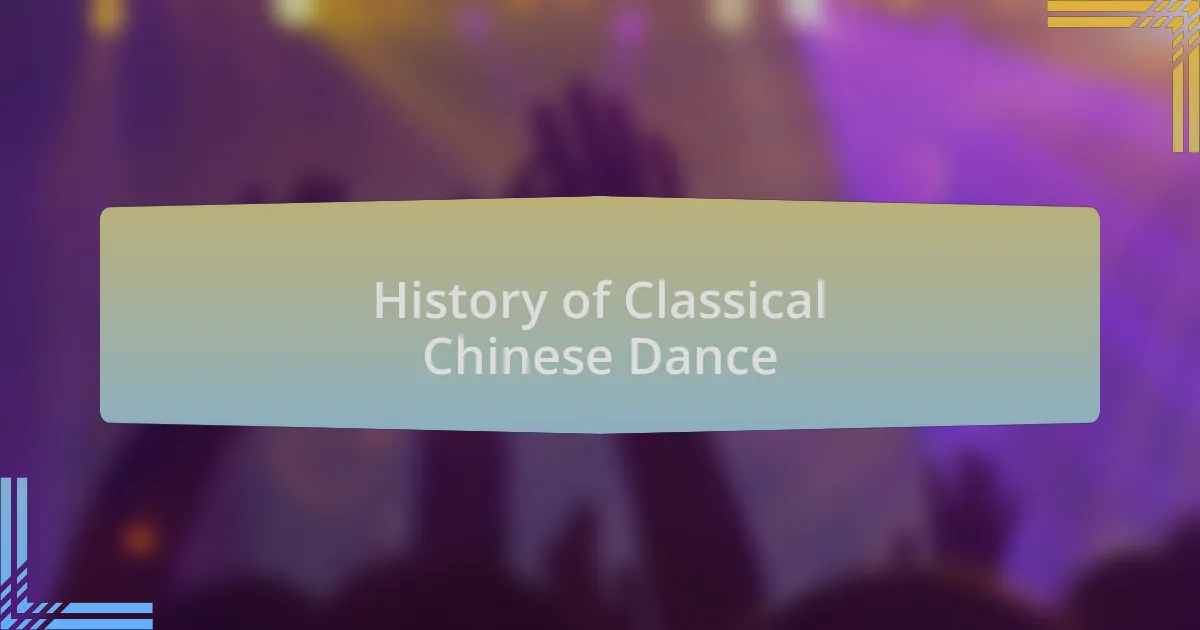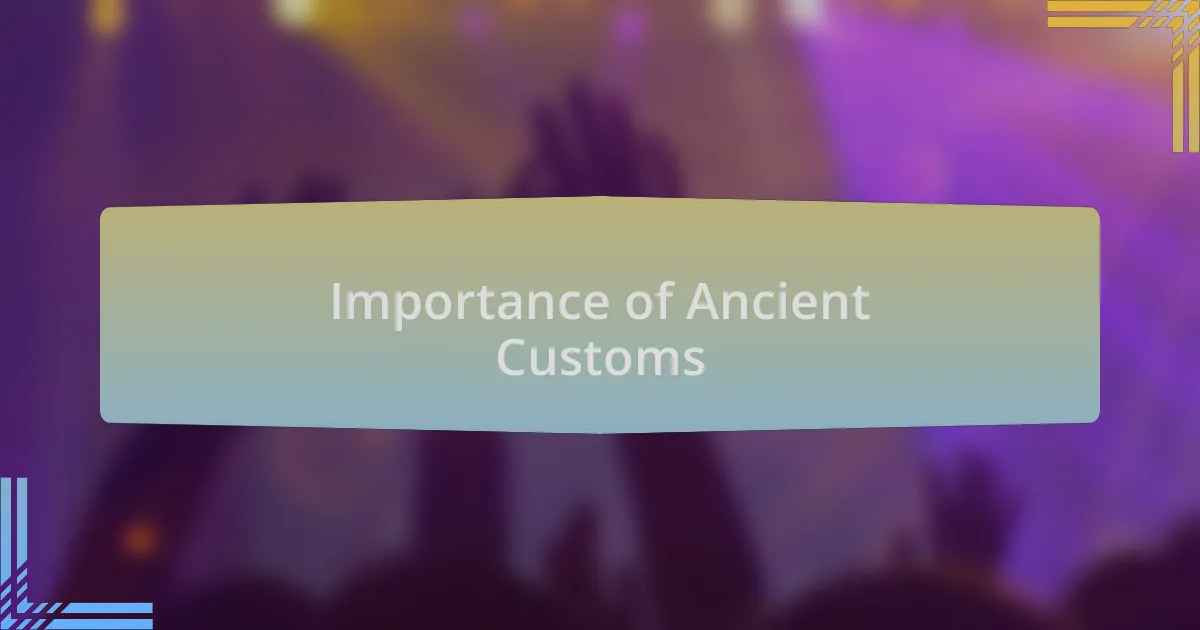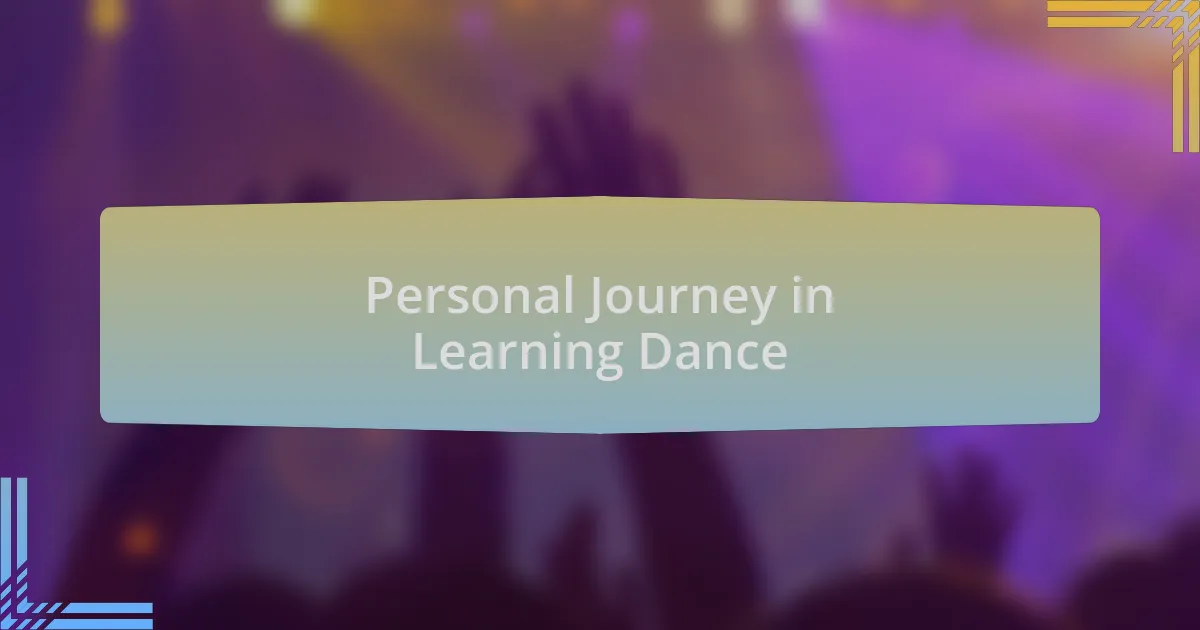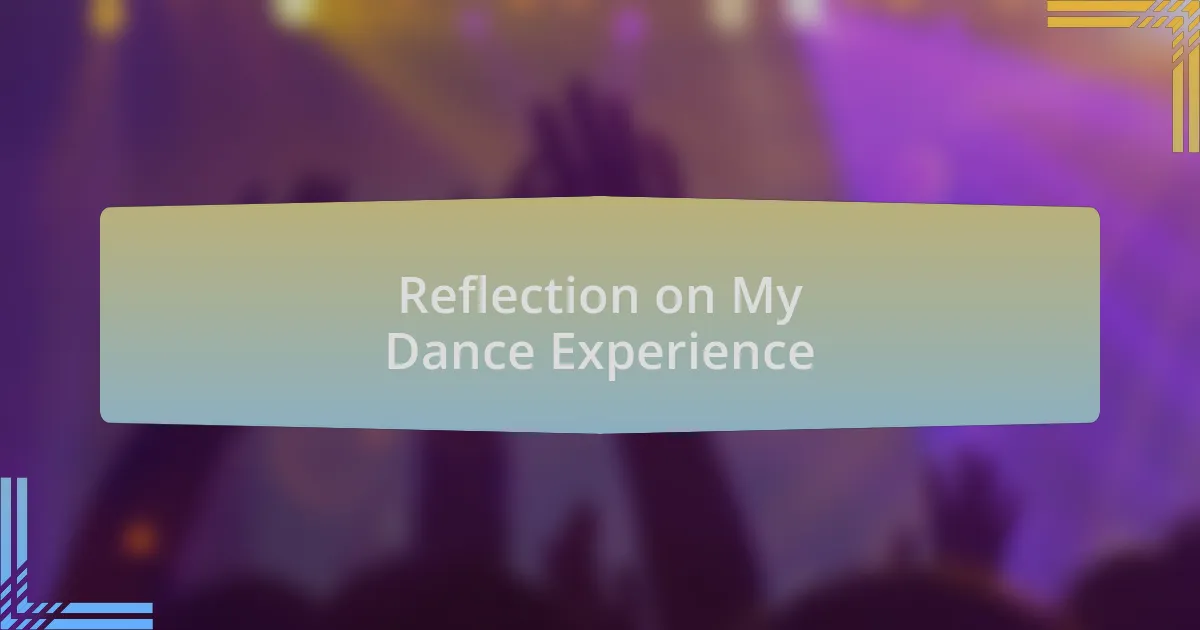Key takeaways:
- Classical Chinese Dance is a historical art form that communicates deep emotions through movement, reflecting Chinese cultural traditions.
- The dance evolved significantly during the Tang Dynasty, blending with regional styles to create a rich tapestry of expressive performance.
- Ancient customs are integral to the dance, connecting performers to their heritage and emphasizing the role of dancers as custodians of cultural identity.
- The personal journey of learning dance reveals self-discovery and the importance of understanding historical narratives behind each performance.

Introduction to Classical Chinese Dance
Classical Chinese Dance is a mesmerizing art form steeped in history, embodying the rich tapestry of Chinese culture. As I’ve delved into this dance, I’ve often wondered how its graceful movements communicate profound emotions without uttering a single word. Each gesture tells a story, reflecting the philosophies and traditions that have shaped Chinese society over centuries.
From the fluidity of the movements to the vibrant costumes adorned with intricate designs, every aspect of Classical Chinese Dance is meticulously crafted to evoke beauty and resonance. I still remember my first performance, where the weight of tradition felt both exhilarating and grounding. This blend of technical precision and emotional expression was a revelation, prompting me to explore how each dance piece can often mirror ancient customs and rituals.
What captivates me most about this dance form is its ability to convey timeless themes such as love, loyalty, and bravery through its movements. Have you ever experienced a performance that moved you deeply? I can recall instances where I was transfixed, feeling a connection not just to the dancers but to the very essence of the heritage they represented. Classical Chinese Dance invites us to not only witness but also participate in a narrative that spans generations, reminding us of the power of art to transcend time and space.

History of Classical Chinese Dance
The roots of Classical Chinese Dance can be traced back thousands of years, evolving alongside the great dynasties of China. I find it fascinating how this dance form drew inspiration from ancient rituals and ceremonies, transforming into a spiritual expression of cultural identity over time. Isn’t it incredible to think that every movement is imbued with historical significance?
During the Tang Dynasty, Classical Chinese Dance reached remarkable heights, often celebrated in imperial courts where it was used to convey stories of gods and heroes. I vividly recall attending a performance highlighting this era, where the dancers embodied grandeur and elegance, showcasing movements that felt both regal and steeped in history. This experience made me appreciate how deeply intertwined the dance is with the beauty of its past.
As the centuries progressed, influences from regional dances and folk traditions began to blend into Classical Chinese Dance, creating a diverse and rich tapestry of styles. I often wonder how many hands have shaped the art form I appreciate today, each dancer contributing their own interpretation and emotion to this legacy. This ongoing evolution reminds me that while the dance is rooted in tradition, it is also alive and breathing—continuously growing with each new generation.

Importance of Ancient Customs
Ancient customs serve as the backbone of cultural identity, especially in art forms like Classical Chinese Dance. I remember the first time I learned about the rituals that influence certain movements; it felt like uncovering a hidden language. Each dance step carries stories of ancestry, traditions, and beliefs that connect performers to a lineage spanning centuries.
There’s something profoundly moving about participating in a dance that reflects ancient customs. I recall performing a piece inspired by traditional festivals, where the music and choreography echoed the values of community and gratitude. It reminded me that we, as dancers, are not just artists; we are custodians of a rich heritage that must be preserved for future generations.
Understanding these ancient customs deepens our appreciation for the art form. Have you ever noticed how a simple gesture can evoke a powerful emotion? I find that when I engage with these customs, the connection to history transforms the dance into a living narrative, making each performance not just a display of skill but a homage to those who came before us.

Personal Journey in Learning Dance
Learning dance has been a transformative experience for me, reflecting a blend of discipline and self-discovery. I still vividly remember my first dance class; the instructor emphasized the importance of grounding ourselves in the spiritual essence of each movement. It struck me then how dance was not merely a physical expression but a transcendental journey connecting me to something far greater than myself.
As I progressed, I found myself diving deeper into the stories behind each dance. One unforgettable moment was during a rehearsal for a performance celebrating the moon festival. The choreography intertwined with the narrative of reunion and gratitude felt personal; it resonated with my own relationships. In that moment, I realized that the experience of dance was not only about the steps but about what those steps represented—a collective memory and shared emotional bond.
Reflecting on my journey, I often ask myself how the dances I learn shape my identity. Each performance feels like a dialogue with history, inviting me to explore my place within it. Through every rehearsal and performance, I connect more with my roots, discovering aspects of my personality that have emerged through this art form. Understanding ancient customs has truly enriched my life, constantly reminding me that dance is both a personal and cultural narrative.

Reflection on My Dance Experience
Diving into the world of Classical Chinese Dance has provided me with insights I never anticipated. I distinctly remember one performance where we embodied the character of a butterfly. As I glided across the stage, I felt an exhilarating sense of freedom, as if shedding layers of my past. That connection to the character was profound, and it made me ponder how much we each carry with us in our movements.
In rehearsing traditional fan dances, I experienced a surge of emotions tied to the rhythmic swishes and flourishes. There was a moment during practice when I struggled to synchronize my movements with the music. Frustration bubbled up, but the gentle reminder from my teacher—“Breathe and listen”—shifted my focus. This wasn’t just a lesson in dance but an important life lesson: to be present and embrace imperfections while striving for grace.
Every performance reminds me of the stories and traditions that informed my practice. I often find myself asking, “What tales do my steps convey?” It’s a journey of connecting with my heritage, a process of peeling back layers to reveal the richness of my own story intertwined with that of my ancestors. Each dance encapsulates emotions that are as relevant today as they were centuries ago, making every experience a celebration of continuity and cultural legacy.